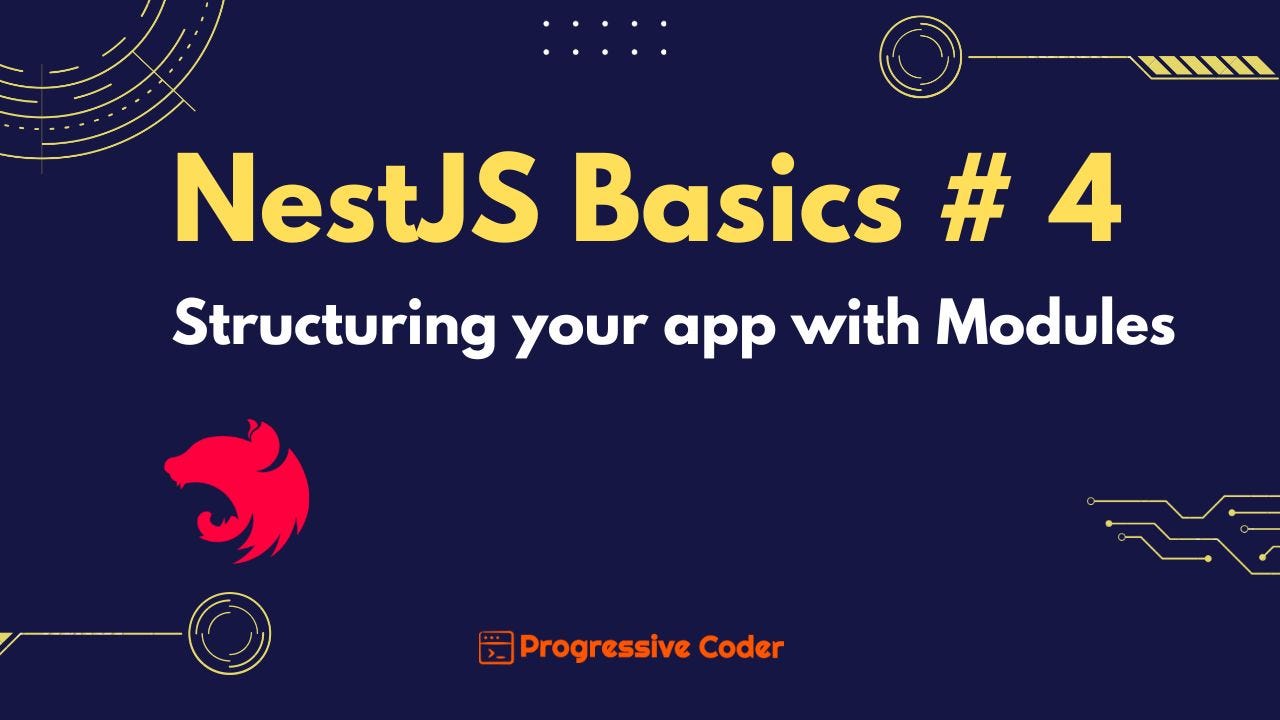NestJS Basics#4 - Structuring your Application with NestJS Modules
Modules are necessary
Welcome to the Part 4 of NestJS Basics.
In the previous post, we covered the important concept of Providers in NestJS. The specific topics were as follows:
Dependency Injection with Providers
Creating a brand-new new service using a NestJS provider
Injecting the Service or the Provider into the Controller
Registering the provider within the application context
Understanding the role of the Nest IOC Container
With the help of providers, we were able to make our Product RESTful API a little more useful. Of course, it is still far from being a real application. But we are getting there one step at a time as we continue our NestJS learning journey.
If you haven’t gone through it yet, you can check out the post on NestJS Providers below:
Time to move ahead now!
In this post, we are going to learn another important concept - NestJS Modules.
The Plan
Here are the things we will cover in this post.
What is a NestJS Module?
The role of the
@Module()decoratorCreating a Feature Module for Products API
Sharing Module Functionalities
Re-exporting a Module
The Use of Global Modules
Want to learn NestJS but haven't joined ProgressiveCoder's paid subscription yet?
Don't delay, click the link below and join now to gain instant access to the course and unlock exclusive content and support.


